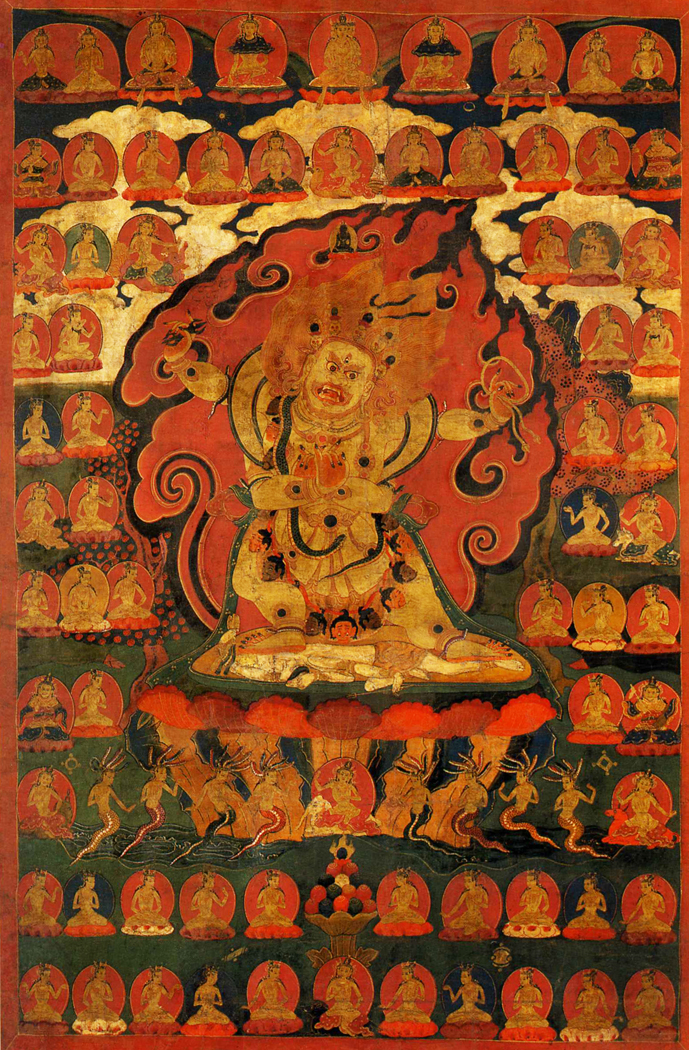
Four armed Vajrapani, Central Regions, Tibet, First Half of the 17th Century
-This is wrathful depiction of Bhutadamara Vajrapani and he is standing in a warrior pose. He helps people to get rid of obstacles on the way to enlightenment.
-He is standing on top of a deity which is an emanation of himself.
-In his right hand he holds a vajra chopper and a drum and in his left hand he holds a skull bowl and trident. In another left hand, he holds a lasso. This lasso is used to bind demons. His back hands are in front of his body. These hands are depicted in the vajrahumkara mudra which shows his victory over a triple universe.
-Above Vajrapani's head is a Aksobhya Buddha who symbolizes the ability to turn anger into wisdom.
-He is wearing wrathful ornaments-the five skull crown, a garland of heads, a snake around his body, and a snake around his neck.
-He has an eye in his forehead and sits on a lotus pedastal.
-Around Vajrapani are many deities.
-From the top to the bottom of the image on the central axis are Sarvavid Vairochana who symbolizes the removal of ignorance, Brahma on a goose, and Aksobhya Buddha. Below Vajrapani on the central axis is Indra. Below Indra is an offering of jewels and most likely the figure of Vishnu.
-At the top of the image is a series of Buddhas.
-There are also eight Nagini who are female dragon queens just below Vajrapani.